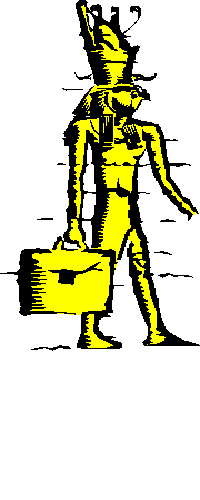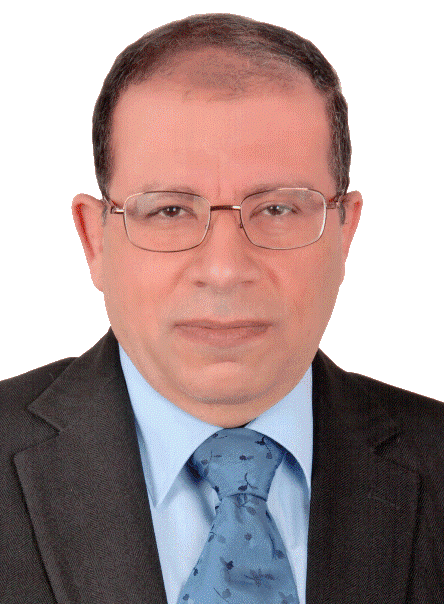Professor of Rhinology & Skull Base Surgery, Ain Shams University, Cairo, Egypt
Department of Oto-Rhino-Laryngology, Faculty of Medicine, Ain Shams University, Cairo, Egypt.
2-
Endoscopic Excision of
Nasopharyngeal Angiofibromas
Nasopharyngeal angiofibroma (NA) is a benign tumor that affects adolescent and young males. Although angiofibromas are the most common benign tumors of the nasopharynx, they account for less than 0.05% of head and neck tumors. They are more prevalent in Asian races.
It is composed of spindle or stellate fibrocytes in various connective tissue stroma with rich vascular network. Vascular channels may be small and of capillary size or very large and of a venous size; the channels are lined with endothelial cells that lie directly against stromal cells with no intervening smooth muscle between these two cell types, and this feature undoubtedly contributes to the capacity for massive bleeding that occurs with biopsy or removal.
As the tumor is not often limited to the nasopharynx, the term angiofibroma is most appropriate. It usually has extensions (e.g., into the nose, paranasal sinuses, pterygomaxillary fossa, and other adjacent regions). The term juvenile angiofibroma is inaccurate because the neoplasm also occurs in older patients and even in children before puberty.
Nasal obstruction, a nasopharyngeal mass, and recurrent epistaxis usually indicates the presence of the tumor, which is morphologically benign but aggressive and destructive. Angiofibromas may grow considerably, causing significant structural and functional damage. They often expand pushing and rarefying bones (anterior displacement of the posterior wall of the maxillary sinus), but also can erode bone and push into and through regional structures (sphenoid sinus floor, pterygoid process). The tumor may grow insidiously to a substantial size, sometimes into the cranium, before symptoms occur; the symptoms are often attributed to more common problems before an accurate diagnosis is established.
There are important issues relating to the choice of diagnostic procedures, adjunctive measures, surgical approach and the role of radiotherapy.
Surgical therapy is recommended by most authors, and the tumors are a challenge for even the most experienced otolaryngologists. The patient should be subjected to preoperative arterial embolization (24-36 hours before surgery) and possibly supply of self-donated blood.
For excision of nasopharyngeal angiofibromas (NA), lateral rhinotomy approach with various modifications and extensions has been the classical external approach. However, it entails extensive bone resections and a facial scar. Endoscopic endonasal resection is well accepted for limited lesions, however large lesions can still be totally resected with endoscopy but needing high degree of endoscopic skill, meticulousness and patience.
Dural exposure or pushing without actual infiltration is the rule and is not a contraindication for endoscopic surgery. Invasion of the major sphenoid wings and infratemporal fossa are not absolute contraindications for endoscopic surgery but do call for special highly skilled endoscopic techniques. Extensions to endocranium and/or for Soft tissue of the adjacent chin call for combined approaches (Endoscope-assisted external approaches) where endoscopic surgical techniques facilitate resection of the lesion in deep hidden recesses with the least adequate external incisions thus limiting excision of healthy tissues and subsequently reducing morbidity.
The following videos address the important issues relating to the endoscopic surgical approach. Complete ethmoidectomy or if adequate limited trimming of middle turbinate exposes the tumor for the first surgical step. Removal of the posterior maxillary sinus wall allows resection of local tumor spread and control of the maxillary artery as well. Infratemporal extensions are dealt with with 450 angled endoscope assisted by finger placed in retromolar sulcus pushing the lesion medially. The tumor mass is dissected from the septum, delivered from the sphenoid sinus (if invaded) and then moved in the direction of the nasopharynx by cautious mobilization of the tumor periphery with a suction elevator in subperiosteal plane. Bipolar diathermy controls smaller feeding vessels and vascular clipping is used for lager vessels. En bloc removal is recommended but piece-meal resection of large tumors is acceptable as they tend to hide behind important attachments to sphenoid body, greater wing of sphenoid and/or pterygoid process.
Video 1 shows imaging of nasopharyngeal angiofibroma for an adolescent male patient presenting with nasal obstruction, epistaxis for few months.
Video 2 shows nasal endoscopy for the previous patient 24 hours after embolization which was of poor result as only evident in the right periphery of the tumor. The tumor was arising from the left spheno-palatine region with attachment to the posterior part of the left middle turbinate.
Video 1 "Nasopharyngeal Angiofibroma Imaging" Video 2 "Nasopharyngeal Angiofibroma Diagnostic Endoscopy"
Video 3
demonstrates the first surgical step "Trimming Middle Turbinate".
In this patient, endoscopic septal surgery was needed for correcting septal
deviation narrowing the access to the tumor.
Video 3 "Trimming Middle Turbinate"
Video 4 shows "Middle Meatal Antrostomy" as the third step. The lateral extent of the tumor determine the size of the antrostomy. Medial maxillectomy is needed for extensive tumors.
Video 4 "Middle Meatal Antrostomy"
Video 5 entails "Pterygo-palatine Exposure" on the left side as the 4TH step in the approach for the tumor.
Video 5 "Pterygo-palatine Exposure"
Video 6 demonstrates "Sphenoidotomy for Exposure of the Tumor in Sphenoid Sinus" as the tumor usually involve one side more than the other, it is safe to enter the less affected sinus first then excise the intersinus septum to expose the more involved side.
Video 7 demonstrates "Dissection of Septal Adhesions" as the first step of tumor dissection.
Video 7 "Dissection of Septal Adhesions"
Video 8 demonstrates "Dissection & delivery of the Tumor from Sphenoid Sinus" as the second step of tumor dissection. Because the tumor was large and dumbbell-shaped hiding its narrow waist eroding the sphenoid floor, it was not possible to deliver the tumor before resecting the main part of it. This permitted the use of microdebrider burr to remove sphenoid floor bone encircling the waist of the tumor at the end of surgery. There was limited erosion of the posterior wall of the left sphenoid infero-lateral recess (pneumatized greater wing of sphenoid) and the tumor was laying directly on the dura of the middle cranial fossa..
Video 8 "Delivery from Sphenoid Sinus"
Video 9 demonstrates "Dissection & delivery of the Tumor from Pterygo-maxillary & Infratemporal Fossae" as the third step of tumor dissection. The tumor was mainly eroding the sphenoid floor, greater wing of sphenoid and pterygoid process. There was no extension into the infratemporal fossa.
Video 9 "Delivery from PPF& ITF"
Video 10 demonstrates "Dissection of the Tumor from the Nasopharynx" as the final step of tumor dissection. The tumor is pushed into the oro-pharynx and removed through the oral cavity.
Video 10 "Dissection from the Nasopharynx"



